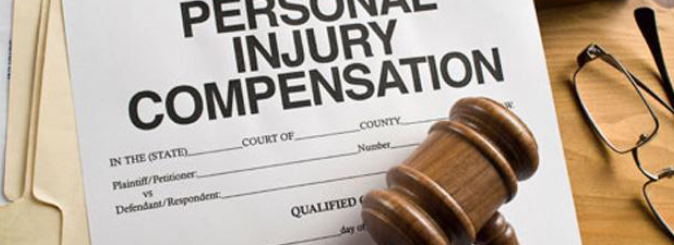Are you getting divorced or filing a lawsuit against someone? If so, you may be wondering about the cost of hiring a lawyer. You see, lawyers don’t work for free, and their fees can greatly vary depending on the type of case and the lawyer’s experience and reputation. Although, some big law firms like Pogust Goodhead may offer a free initial consultation to talk about your case and their fees.
Their fee structures can also vary, but typically, they can be broken down into two main categories: hourly rates and contingency fees. You might think that contingency fees are only for personal injury cases, but they can actually be a good option for other cases. But is that so? Let’s find out the truth and see which fee structure is best when hiring a lawyer for your case.
Payment Timing
 How you’ll be billed for legal services is something you need to think of. With hourly rates, clients typically pay as they go, with charges based on the amount of time spent on their case. This can lead to regular invoices and potential fluctuations in costs depending on the complexity of the work involved. On the other hand, contingency fees offer clients the opportunity to pay their attorney a percentage of any settlement or court award once the case is resolved. This means that clients may not have to pay anything upfront, making legal representation typically more accessible for those who may not have immediate funds available.
How you’ll be billed for legal services is something you need to think of. With hourly rates, clients typically pay as they go, with charges based on the amount of time spent on their case. This can lead to regular invoices and potential fluctuations in costs depending on the complexity of the work involved. On the other hand, contingency fees offer clients the opportunity to pay their attorney a percentage of any settlement or court award once the case is resolved. This means that clients may not have to pay anything upfront, making legal representation typically more accessible for those who may not have immediate funds available.
Understanding your financial situation and preferences is key when deciding which payment timing structure works best for you. Whichever option you choose, clarity and transparency in communication regarding billing practices are essential for a smooth client-lawyer relationship.
Risk
Now, let’s talk about the level of risk involved. Hourly rates provide a more predictable payment structure, as you pay for the time your lawyer spends on your case regardless of the final outcome. This can be advantageous if you have a clear understanding of the scope of work required. On the other hand, contingency fees shift some of the risk onto the lawyer. In this arrangement, they only get paid if they ultimately win your case or reach a settlement. It can be quite handy for clients who may not have the financial means to cover legal expenses upfront. However, it’s essential to understand that lawyers typically charge a higher percentage for contingency fees to compensate for the risk they are taking on.
Case Suitability
When considering lawyer fees, it’s crucial to assess the suitability of your case for different fee structures. Certain types of cases may be better suited for hourly rates, while others may benefit more from contingency fees. Hourly rates are typically favored in cases where the amount of work required is uncertain or if the outcome is hard to predict. This can include complex legal matters that might involve extensive research and litigation. On the other hand, contingency fees are often used in personal injury or wrongful death cases where there’s a clear defendant with the means to pay damages. In such instances, clients don’t have to worry about upfront costs as their attorney only gets paid if they win the case.
Tips for Clients to Choose the Right Fee Structure
 Now that you’ve learned all the pros and cons, are you finally set to make a decision? If not, here are some tips for you. First and foremost, consider the nature of your case. For straightforward matters like drafting contracts or wills, an hourly rate may be more cost-effective. However, for personal injury or medical malpractice cases where the outcome is uncertain, a contingency fee arrangement could be more beneficial. Next, think about your financial situation and risk tolerance. If you’re unable to afford upfront legal fees but have a strong case with the potential for high compensation, a contingency fee might be the way to go. On …
Now that you’ve learned all the pros and cons, are you finally set to make a decision? If not, here are some tips for you. First and foremost, consider the nature of your case. For straightforward matters like drafting contracts or wills, an hourly rate may be more cost-effective. However, for personal injury or medical malpractice cases where the outcome is uncertain, a contingency fee arrangement could be more beneficial. Next, think about your financial situation and risk tolerance. If you’re unable to afford upfront legal fees but have a strong case with the potential for high compensation, a contingency fee might be the way to go. On …
Continue.. Understanding Lawyer Fees: Hourly Rates vs. Contingency Fees






 Accuracy is a cornerstone of the legal profession. When it comes to preserving and analyzing evidence, every detail matters. Legal transcription is vital in ensuring that these details are accurately captured and documented. By transcribing court proceedings or recorded statements, legal professionals can refer back to the exact words spoken by witnesses, experts, and other parties involved. This level of precision allows for accurate analysis and interpretation of the evidence presented. Moreover, transcription helps eliminate any ambiguity or misinterpretation from relying solely on memory or handwritten notes.
Accuracy is a cornerstone of the legal profession. When it comes to preserving and analyzing evidence, every detail matters. Legal transcription is vital in ensuring that these details are accurately captured and documented. By transcribing court proceedings or recorded statements, legal professionals can refer back to the exact words spoken by witnesses, experts, and other parties involved. This level of precision allows for accurate analysis and interpretation of the evidence presented. Moreover, transcription helps eliminate any ambiguity or misinterpretation from relying solely on memory or handwritten notes. It would be helpful to have an
It would be helpful to have an 
 The first reason VA claims are denied is due to a lack of evidence. The VA requires claimants to submit evidence to support their claim. This can include medical records, doctor’s notes, and any other documentation supporting the claim. If you do not have enough evidence to support your claim, your claim will likely be denied.
The first reason VA claims are denied is due to a lack of evidence. The VA requires claimants to submit evidence to support their claim. This can include medical records, doctor’s notes, and any other documentation supporting the claim. If you do not have enough evidence to support your claim, your claim will likely be denied. The second reason that VA claims get denied is that the information on the claim is incorrect. This can happen if you make a mistake on your application or if the VA makes a mistake when
The second reason that VA claims get denied is that the information on the claim is incorrect. This can happen if you make a mistake on your application or if the VA makes a mistake when  The fourth and final reason that VA claims get denied is that the claimant is not eligible for benefits. There are several different reasons why someone may not be eligible for VA benefits. It is important to review the eligibility requirements before submitting a claim to avoid having your claim denied. This can save you some time and hassle in the long run. You can usually find the eligibility requirements on the VA’s website. This is something that your lawyer can also help you with.
The fourth and final reason that VA claims get denied is that the claimant is not eligible for benefits. There are several different reasons why someone may not be eligible for VA benefits. It is important to review the eligibility requirements before submitting a claim to avoid having your claim denied. This can save you some time and hassle in the long run. You can usually find the eligibility requirements on the VA’s website. This is something that your lawyer can also help you with.

 The third benefit of hiring a military lawyer is that they can help you prevent a court martial. A court-martial is a serious legal proceeding that can result in jail time, a dishonorable discharge, and other penalties. If you are facing a court-martial, hiring a military lawyer who can help you avoid these penalties is important. A court-martial is a very serious matter and should not be taken lightly. This can ruin your career and your life. If you’re considering hiring a military attorney, we hope that you find the information in this post helpful. Military attorneys can provide invaluable support and guidance during an incredibly difficult time.
The third benefit of hiring a military lawyer is that they can help you prevent a court martial. A court-martial is a serious legal proceeding that can result in jail time, a dishonorable discharge, and other penalties. If you are facing a court-martial, hiring a military lawyer who can help you avoid these penalties is important. A court-martial is a very serious matter and should not be taken lightly. This can ruin your career and your life. If you’re considering hiring a military attorney, we hope that you find the information in this post helpful. Military attorneys can provide invaluable support and guidance during an incredibly difficult time.
 The first step to avoiding medical lawsuits is to set higher standards for yourself. If you make a mistake, admit it and take responsibility for it. Do not try to cover it up or blame someone else. Be honest with your patients and with yourself. It is also important that you always put your patients’ best interests first. This means that you should always be up-to-date on the latest medical advancements and research. It would be best if you also kept abreast of new technologies and treatments that could benefit your patients.
The first step to avoiding medical lawsuits is to set higher standards for yourself. If you make a mistake, admit it and take responsibility for it. Do not try to cover it up or blame someone else. Be honest with your patients and with yourself. It is also important that you always put your patients’ best interests first. This means that you should always be up-to-date on the latest medical advancements and research. It would be best if you also kept abreast of new technologies and treatments that could benefit your patients. Finally, it is important to understand informed consent. This means you must get your patients’ permission before treating them. If a patient does not give their informed consent, they can file a lawsuit against you. There are cases when patients cannot give informed consent, such as when they are unconscious. In these cases, you must get permission from a family member or guardian. Some doctors mistake of assuming that they have a patient’s informed consent. This can lead to serious legal problems, so it is always best to err on the side of caution. The goal of this blog post was to provide you with some tips that will help you avoid a medical lawsuit.
Finally, it is important to understand informed consent. This means you must get your patients’ permission before treating them. If a patient does not give their informed consent, they can file a lawsuit against you. There are cases when patients cannot give informed consent, such as when they are unconscious. In these cases, you must get permission from a family member or guardian. Some doctors mistake of assuming that they have a patient’s informed consent. This can lead to serious legal problems, so it is always best to err on the side of caution. The goal of this blog post was to provide you with some tips that will help you avoid a medical lawsuit.


 Once you have hired an immigration lawyer, it is essential to cooperate with them. It means responding to their requests for information promptly. It also means keeping them updated on any changes in your case. If you do not cooperate with your lawyer, it could jeopardize your chances of success. Moreover, when creating the best strategy for your case, your lawyer will need as much information from you as possible. These are just a few tips to keep in mind when working with an immigration lawyer. If you follow these tips, you will be better positioned to achieve a successful outcome for your case.
Once you have hired an immigration lawyer, it is essential to cooperate with them. It means responding to their requests for information promptly. It also means keeping them updated on any changes in your case. If you do not cooperate with your lawyer, it could jeopardize your chances of success. Moreover, when creating the best strategy for your case, your lawyer will need as much information from you as possible. These are just a few tips to keep in mind when working with an immigration lawyer. If you follow these tips, you will be better positioned to achieve a successful outcome for your case. Most people search for topics like
Most people search for topics like  As mentioned before, personal injury cases are complex. The legal system can be challenging to navigate, especially if you’ve never been in this type of situation before. That is why it is crucial to have an experienced lawyer on your side who knows how the process works and can help guide you through it.
As mentioned before, personal injury cases are complex. The legal system can be challenging to navigate, especially if you’ve never been in this type of situation before. That is why it is crucial to have an experienced lawyer on your side who knows how the process works and can help guide you through it. Every business needs to understand its strengths, weaknesses, opportunities, and threats (SWOT) to succeed. Veterans can start by conducting a SWOT analysis for their business idea. This will help them identify any potential areas of concern that they may need to address before starting their business. An example would be:
Every business needs to understand its strengths, weaknesses, opportunities, and threats (SWOT) to succeed. Veterans can start by conducting a SWOT analysis for their business idea. This will help them identify any potential areas of concern that they may need to address before starting their business. An example would be: Starting a business can be a lonely endeavor, so building a support network of family, friends, and other entrepreneurs is important. These people can provide emotional support and advice when needed. Many veteran-focused networking groups can connect you with other veteran entrepreneurs. Some of the best resources for veteran entrepreneurs are:
Starting a business can be a lonely endeavor, so building a support network of family, friends, and other entrepreneurs is important. These people can provide emotional support and advice when needed. Many veteran-focused networking groups can connect you with other veteran entrepreneurs. Some of the best resources for veteran entrepreneurs are: Prescription drugs are often abused because they have less stigma than illegal drugs. Also, if they are in the medicine cabinet at home, they are easily accessible to other family members, including teenagers. Prescription drugs are considered safer than street drugs because doctors prescribe them. But with the growing opioid epidemic, parents need to curb prescription drug abuse. It should be taken as seriously as if the teen were caught with illegal drugs.
Prescription drugs are often abused because they have less stigma than illegal drugs. Also, if they are in the medicine cabinet at home, they are easily accessible to other family members, including teenagers. Prescription drugs are considered safer than street drugs because doctors prescribe them. But with the growing opioid epidemic, parents need to curb prescription drug abuse. It should be taken as seriously as if the teen were caught with illegal drugs.
 Settling a claim for such damages depends on whether the owner tried to avoid the accident. It means that the injured party may have acted recklessly to cause his or her injuries. To have any chance of winning a claim or lawsuit, a slip and fall victim must prove that his or her accident. For instance, they could start by explaining the causes. This way requires them to pay more attention to a dangerous situation to prevent failure. If it was raining outside and someone slipped on a coffee shop door, it may not be a strong case. The victim has a better chance of success if the establishment owner does not clean the floors or post warning signs on the front door.
Settling a claim for such damages depends on whether the owner tried to avoid the accident. It means that the injured party may have acted recklessly to cause his or her injuries. To have any chance of winning a claim or lawsuit, a slip and fall victim must prove that his or her accident. For instance, they could start by explaining the causes. This way requires them to pay more attention to a dangerous situation to prevent failure. If it was raining outside and someone slipped on a coffee shop door, it may not be a strong case. The victim has a better chance of success if the establishment owner does not clean the floors or post warning signs on the front door. The main reason why you need to hire a
The main reason why you need to hire a  Another reason why you need to hire an auto accident attorney is the help they can provide in representing you. It is sometimes a difficult and scary experience to appear before a judge, and many men and women are unsure of how to proceed. If you are not a lawyer, you’ll need to hire one so that he or she could present you properly in the court. This can make things clear for the judge and people around there to understand what you want them to know about the incident.
Another reason why you need to hire an auto accident attorney is the help they can provide in representing you. It is sometimes a difficult and scary experience to appear before a judge, and many men and women are unsure of how to proceed. If you are not a lawyer, you’ll need to hire one so that he or she could present you properly in the court. This can make things clear for the judge and people around there to understand what you want them to know about the incident. Ultimately, it is very important to hire an auto accident attorney to ensure that you get the most out of your settlement. For this reason, it is crucial to hire an excellent lawyer to handle your compensation discussion. The last thing you want is for your settlement to be considerably less than what you are entitled to, plus a wonderful lawyer will help ensure that this does not happen. Overall, there are many reasons to hire a car accident lawyer.…
Ultimately, it is very important to hire an auto accident attorney to ensure that you get the most out of your settlement. For this reason, it is crucial to hire an excellent lawyer to handle your compensation discussion. The last thing you want is for your settlement to be considerably less than what you are entitled to, plus a wonderful lawyer will help ensure that this does not happen. Overall, there are many reasons to hire a car accident lawyer.… The website of sexual harassment
The website of sexual harassment  The internet bookstore segment is a valuable resource for customers searching for sexual harassment attorneys. The section compiles the experiences and alternatives received from previous and present clients locally. By meeting the part in person, you may easily request the specifics of a lot of their satisfied customers, and you may contact them directly by telephone or email to find out more about their expertise in addition to the wisdom and knowledge in their community.…
The internet bookstore segment is a valuable resource for customers searching for sexual harassment attorneys. The section compiles the experiences and alternatives received from previous and present clients locally. By meeting the part in person, you may easily request the specifics of a lot of their satisfied customers, and you may contact them directly by telephone or email to find out more about their expertise in addition to the wisdom and knowledge in their community.… The moment you understand that filing an accident lawsuit can allow you to find reimbursement that will pay the bills, the next step is to find a personal injury lawyer. Personal injury is another area of law, and only a specialist can allow you to acquire a reimbursement that includes all of your losses. An expert should have the capacity to help you understand the nature of your scenario and the compensation.
The moment you understand that filing an accident lawsuit can allow you to find reimbursement that will pay the bills, the next step is to find a personal injury lawyer. Personal injury is another area of law, and only a specialist can allow you to acquire a reimbursement that includes all of your losses. An expert should have the capacity to help you understand the nature of your scenario and the compensation.  You should make sure that a potential lawyer’s credentials are up to date. An excellent lawyer will have the correct credentials and qualifications, which will set him or her apart from the numerous unscrupulous attorneys out there. Do your preparation and determine what requirements a personal injury lawyer in your area should possess.
You should make sure that a potential lawyer’s credentials are up to date. An excellent lawyer will have the correct credentials and qualifications, which will set him or her apart from the numerous unscrupulous attorneys out there. Do your preparation and determine what requirements a personal injury lawyer in your area should possess.  In many car accidents, the cause is the negligence of both drivers involved. Settlement often occurs when the negligent driver tries to avoid criminal charges. It may end up with the injured party paying the hospital bills and subsequent damages. Teenagers are sometimes very insecure. It is why they tend to get involved in accidents like this. They can be very impulsive and adventurous. According to one survey, nearly seventy percent of car accidents involve teenagers, especially boys. Through investigations and trials, the evidence is needed to determine the fault that caused the accident.
In many car accidents, the cause is the negligence of both drivers involved. Settlement often occurs when the negligent driver tries to avoid criminal charges. It may end up with the injured party paying the hospital bills and subsequent damages. Teenagers are sometimes very insecure. It is why they tend to get involved in accidents like this. They can be very impulsive and adventurous. According to one survey, nearly seventy percent of car accidents involve teenagers, especially boys. Through investigations and trials, the evidence is needed to determine the fault that caused the accident. Car accident attorneys will only maintain control if the accident caused property damage, personal injury, and excessive. In these situations, a thorough investigation and further investigation are necessary to conclude the matter successfully. The attorney will provide legal advice, discussions, and meetings to let the client know where they stand for the case. The law is powerful. None of us want to act against it. However, there are instances when incidents cannot be controlled by doing these things. Being cautious and understanding each of our limitations must protect us from breaking the laws and driving rules.…
Car accident attorneys will only maintain control if the accident caused property damage, personal injury, and excessive. In these situations, a thorough investigation and further investigation are necessary to conclude the matter successfully. The attorney will provide legal advice, discussions, and meetings to let the client know where they stand for the case. The law is powerful. None of us want to act against it. However, there are instances when incidents cannot be controlled by doing these things. Being cautious and understanding each of our limitations must protect us from breaking the laws and driving rules.…
 It is vital to be sure that your resources will probably be left to your ideal people when you expire. Consequently, it would be helpful if you’re cautious while searching for organizations to make that documentation. Besides making sure they perform their job in time, it might help ensure that everything is completed appropriately. Bear in mind they can only aid you in the procedure.
It is vital to be sure that your resources will probably be left to your ideal people when you expire. Consequently, it would be helpful if you’re cautious while searching for organizations to make that documentation. Besides making sure they perform their job in time, it might help ensure that everything is completed appropriately. Bear in mind they can only aid you in the procedure. A personal injury lawyer with an excellent deal of experience instead of just years of instruction but a background of an upbeat variety of successful talks is a substantial benefit for your circumstance. A recorded assertion may and can be utilized as proof against you in the settlement circumstance. At the preliminary, on the off chance, you’ve missed any data or have forgotten any exhortation while explaining. A personal injury lawyer with millions of settlements can acquire your claim by only threatening to take the situation to trial.
A personal injury lawyer with an excellent deal of experience instead of just years of instruction but a background of an upbeat variety of successful talks is a substantial benefit for your circumstance. A recorded assertion may and can be utilized as proof against you in the settlement circumstance. At the preliminary, on the off chance, you’ve missed any data or have forgotten any exhortation while explaining. A personal injury lawyer with millions of settlements can acquire your claim by only threatening to take the situation to trial.
 Dedicate your time to research to get the best personal injury lawyer. There are different types of lawyers, and not every lawyer will take care of your case the right way. Start by asking help from people around you. You will be lucky if they have used the services of personal injury lawyer and even if this is not the case, they might have referrals from friends or read about one in the print media. Sometimes the help we are looking for is right next to us. Ask around as much as you can.
Dedicate your time to research to get the best personal injury lawyer. There are different types of lawyers, and not every lawyer will take care of your case the right way. Start by asking help from people around you. You will be lucky if they have used the services of personal injury lawyer and even if this is not the case, they might have referrals from friends or read about one in the print media. Sometimes the help we are looking for is right next to us. Ask around as much as you can. Many personal injury lawyers will work in terms of commission. That is, they will take a percentage of your compensation. This means that they will work hard to make sure that you win the case. Be careful of the rates signed, and it should entail all fees incurred during the case.…
Many personal injury lawyers will work in terms of commission. That is, they will take a percentage of your compensation. This means that they will work hard to make sure that you win the case. Be careful of the rates signed, and it should entail all fees incurred during the case.… Mujdah Rahim, Family law attorney
Mujdah Rahim, Family law attorney Summary
Summary Felony cases usually come with hefty penalties with some even facing more than a year imprisonment. Criminal laws may vary from one country to another or state to state. Criminal law serves a number of purposes and is beneficial to the society in several ways which include:
Felony cases usually come with hefty penalties with some even facing more than a year imprisonment. Criminal laws may vary from one country to another or state to state. Criminal law serves a number of purposes and is beneficial to the society in several ways which include: expect from others and that engaging in particular activities may infringe on the rights of others. This helps promote peaceful coexistence in the society. Without criminal law, everything would be in chaos.…
expect from others and that engaging in particular activities may infringe on the rights of others. This helps promote peaceful coexistence in the society. Without criminal law, everything would be in chaos.…